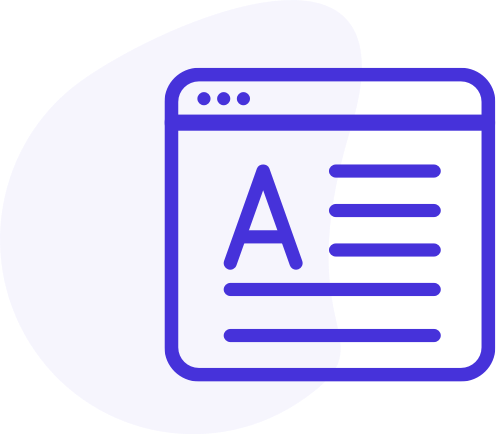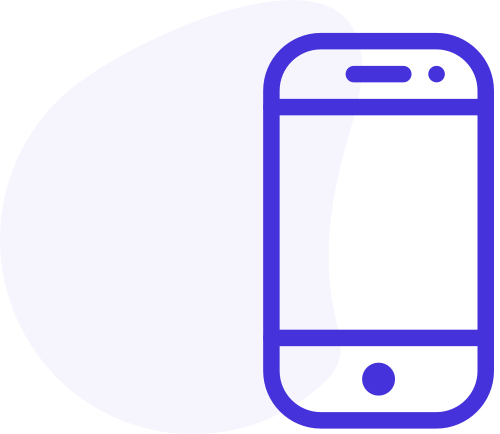Custom LMS Development Services
Build Your e-Learning Business
engage audiences with increased Online Presence
Learn About Future-ready Online Learning Management Solutions

What's Trending Now
We are one of the leading learning management system (LMS) providers in India. We provide a fully customizable, secure, fast and robust eLearning management system (LMS). Our extensive experience as an LMS provider acts as a solid base for providing software learning solutions to train people and leave a long-lasting effect of learning for a small, medium, large organization or a training company. Our eLearning management systems (LMS) are also integrated with a strong certification or assessment engine to access the learning gaps of the learners with pre-setted guidelines.
These test helps to reinforce the new information learned and records the learner’s progress. Our secure learning management system easily handles data exchange of over lakhs of learners with 99.5% of Uptime.
Don't Miss Out
E-learning software can collect information on the learners and provide them personalized course material and courses for training, while at the same time providing great insights on the learners’ progress and performance to their teachers or instructors. They use data analytics to recover and improve more suggestions and adjust as per the students’ or employees’ performance. The goal is to enhance student or employee knowledge and performance by delivering training in a way that is tailored specifically toward them, at the same time allowing the teacher or instructor to keep full control over the course material.
As technology evolves and education becomes future-ready, the future of LMS will become more than a helpful administrative tool.
Our LMS Development Services
Tailored Learning Solutions: Customizable LMS and Comprehensive Services Delivered by Our Expert Team
Custom LMS development
We will develop a custom LMS application that meets the needs of your target audience.
LMS Integration
We will Integrate your LMS seamlessly with other systems like CRM, Payment Services, Social Media, and many others.
Migration
We'll assist you in transferring all the data quickly and painlessly from a pre-made solution to a customized one.
LMS Consulting
Our LMS consulting services aim to assist you in implementing a new LMS or enhancing an existing LMS. This will improve the learning experience, engagement, user adoption and lower learning costs.
Cloud LMS
Our LMS cloud solutions help you create cloud-based LMS software.
LMS Implementation
We can quickly set up your LMS and link it to your existing enterprise systems and content sources. Six major steps are required to implement an LMS: planning, configuration, systems integration, user acceptance, testing and going live.
LMS Features

Course Management
Tools to create, organize, and manage courses, including uploading content, setting modules, and defining assessments.

SCORM & xAPI Compliance
These are pivotal for ensuring interoperability, while providing robust tracking and reporting capabilities for diverse learning experiences.

Learning Portals
Acts as the primary interface for learners, providing a comprehensive overview of available learning materials and fostering a conducive learning environment.

Branding
Ability to customize the LMS interface, including branding options to align with the organization's look and feel.

White-labeling
Reinforcing brand identity and creating a seamless, branded experience for users without any reference to the LMS provider.

Integrations
An LMS should integrate with HR systems, support custom APIs, enable Single Sign-On (SSO), and offer webinar integration for seamless user experience and live sessions.

Webinar integration
Webinar integration in an LMS enables real-time online sessions, fostering interactive learning and engagement between instructors and students through live video, audio, and chat.

Assessment and Grading
Tools for creating quizzes, assignments, and assessments, along with grading and tracking learner progress.

Responsive design
Accessibility through mobile devices, allowing users to access courses and materials on-the-go.

Gamification
Incorporating gamified elements like badges, points, leaderboards, or rewards to enhance learner engagement and motivation.

Configurable user roles & permissions
LMS allow administrators to assign specific access levels and responsibilities, ensuring secure and tailored functionality for different user groups.

Reporting
Generating reports on learner progress, course completion rates, and overall performance analytics.

Skills & Certification tracking
LMS monitors learner progress, records acquired skills, and issues certificates upon course completion, ensuring verified and documented achievement of educational goals.

E-commerce Functionality
LMS enables the sale of courses and learning materials, integrates with payment gateways, and manages subscriptions and memberships for revenue generation.

Learning paths
Learning paths guide learners through structured content, ensuring sequential mastery of topics, tailored to skill levels and goals, fostering comprehensive understanding and growth.

Notifications & Reminders
Notifications & Reminders alert users of updates, deadlines, or activities, enhancing engagement and timely participation in courses or learning activities, ensuring consistent progress.

Multilingual Interface
Multilingual Interface offers content and navigation in multiple languages, accommodating diverse learners globally.

Security
Ensuring data security, user privacy, and compliance with industry standards such as GDPR, HIPAA, or ADA accessibility standards.
Our LMS Development Process
Our Comprehensive Iterative Process Explained
Compilation of Data & Resources
Selecting the Right Platform
Structural Design
Development
Testing
Launch


choose, customize and collaborate
Customized LMS Solutions
An LMS alone is not enough to deliver business goals. A more holistic approach is required; you need a dedicated team and years of expertise to turn a technology platform into a solution that provides value at a corporate level. Our Team has years of experience creating multi-component learning solutions that deliver business value. We will work with you to understand your strategic goals and then design, configure and maintain the Learning Ecosystem to specification so that it delivers as promised.
Make different completely tweaked and marked inhabitant frameworks inside your LMS. Our Multi-Tenant element permits you to have numerous customers, merchants or accomplices inside your e-Learning stage with various subjects, separate markings, and rules.
We Solve Real Problems
what can we do for you?

Content Marketing
Generate 3 times as many leads as traditional marketing, using content marketing strategies.

Web Development
Get robust, top-notch website or web application with trending technologies.

Mobile App Development
Empower your startups with android, iOS and windows mobile applications.
We Have Great Answers
Ask Us Anything
A learning management system (LMS) is a web-based program or application used to plan, implement and assess a particular learning process.
LMSs are used to plan, implement and evaluate a specific learning process. It is software that is used in eLearning programs. It helps in administration, documentation, recording, and tracking.
LMS can be a very profitable business model. It allows trainers to connect with learners and assess their training needs, offer courses, and track learners’ progress.
It defines the data models and communication methods that enable LMSs and eLearning content to work together. It tells programmers how they can write code that works well with other eLearning software.
These are the steps to follow:
- Create your course in either an authoring tool such as Easygenerator, or an LMS.
- Publish your course as a SCORM package.
- Upload the SCORM package to your LMS and add learners to the course.
- The LMS will track and store all the learners’ results.
There are 4 main types of Learning Management Systems (LMS) that you should consider.
- Cloud-based LMS or SaaS LMS
- Open-source LMS
- Custom-built LMS
- Installed LMS or On-premise LMS
LMSs allow you to track the progress of learners in the course material. You can track their understanding of the course material and measure their interaction with it. This will allow you to determine if the content meets their needs.